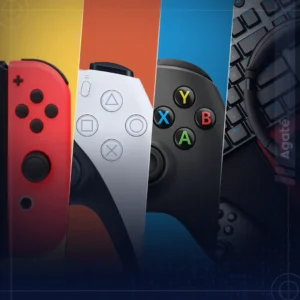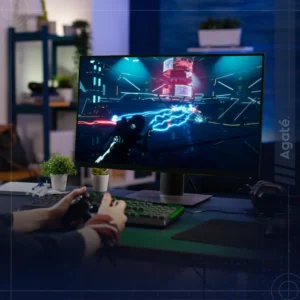The process of porting a game to other platforms has become an important part of the modern gaming business. Game developers may reach a larger audience and optimize their market potential by porting their games. But porting games to several platforms involves more than just transferring code from one platform to another. Each platform’s screen sizes, input methods, and control schemes must be thoroughly understood. So, what are the main factors that game makers should take into account? Let’s find out!
Identify the Target Platforms
The first step in porting a game is to identify the target platforms. The most common platforms for game development include PC, consoles (such as Xbox and PlayStation), and mobile devices (such as iOS and Android). Each platform has its unique hardware specifications, software requirements, and user interface. In porting games, game developers must have a thorough understanding of each platform’s specifications to ensure that the game can run smoothly and provide an enjoyable user experience.
Choose the Right Tools
Once you have identified the target platforms, the next step is to choose the right tools. Game engines like Unity and Unreal Engine provide developers with the flexibility to develop games for multiple platforms simultaneously. These engines have built-in features that allow developers to optimize their game’s performance for each platform without having to write platform-specific code. Additionally, there are several middleware tools available that can help developers port their games to different platforms, such as graphics libraries and audio engines.
Hardware and Software Optimization
For porting games, optimizing a game for different platforms involves adjusting the game’s hardware and software requirements to match each platform’s specifications. It is more complex than it appears to port a game from one system to another. To begin, the developer must confirm that the game’s codebase is compatible with the new platform, which will need the porting of any non-standard APIs or libraries used during development. The programming must also be adjusted for the new platform’s speed and hardware capabilities, as games that run too slowly or have bad input latency can be unplayable.
For example, if you are porting a game to a mobile device, you need to ensure that the game’s graphics and audio can run smoothly on the device’s hardware. Similarly, if you are porting a game to a console, you need to ensure that the game is optimized for the console’s unique hardware architecture.
User Interface and User Experience
It’s hard to overstate the importance of a well-designed User Interface (UI) and User Experience (UX) when it comes to porting games and game development in general. Whether you’re creating a game for a console, PC, or mobile device, the UI/UX is one of the primary ways that players interact with your game. Not only does it need to be visually appealing, but it also needs to be optimized for the specific platform you’re targeting. For instance, a mobile game should have a UI that’s easy to navigate using touch controls, while a console game should be designed with gamepad controls in mind. To ensure a seamless user experience, the UI/UX for each platform should be consistent with that platform’s design standards.
One of the most significant challenges in game development is ensuring that the UI is intuitive and optimized for each platform. Unintuitive interfaces and poor responsive interactions are an immediate turn-off, no matter how good your graphics are. Game developers need to understand the unique features of each platform and design their UI and UX accordingly.
Testing and Quality Assurance
Testing and quality assurance (QA) refers to the process of testing a game to verify that it fulfils requirements for functionality, usability, and overall quality. Without adequate QA, porting games may be riddled with bugs, glitches, and other issues that detract from the player experience. QAs are critical components of porting a game to different platforms. Testing should be done on each platform to ensure that the game runs smoothly and provides an enjoyable user experience.
Additionally, game developers should perform compatibility testing to ensure that the game can run on all versions of each platform. This is because one of the key problems of video game porting is recognizing and addressing technical issues that may develop throughout the process. These can include compatibility issues, performance problems, and other technical challenges that may impact the gameplay. However, by implementing a rigorous QA process, developers can identify and address these issues before the game is released.
Marketing and Distribution
Marketing and distribution are essential aspects of porting a game to different platforms. Game developers must have a clear understanding of each platform’s distribution channels and marketing strategies. For example, mobile games are typically distributed through app stores, while console games are typically distributed through online marketplaces. Additionally, game developers must have a marketing strategy in place to promote their game on each platform and reach their target audience.
Challenges and Limitations
While porting a game to different platforms can be beneficial for game developers, it also presents a range of challenges and limitations. Here are some of the biggest challenges that game developers face while developing games for multiple platforms:
Control Differences
Players input their commands differently on different platforms. For example, PC gamers use the mouse to control the camera, while mobile gamers swipe with two fingers or tilt the phone. Translating a game’s controls to different platforms while keeping them intuitive and bug-free can be quite challenging.
Balancing visual quality and performance: Different platforms have different hardware with varying processing power. Developing visually stunning games for high-end PCs is easy, but maintaining the same graphics quality on mobile devices without sacrificing performance is challenging. Developers have to strike a balance between visual quality and performance for each platform.
Different Programming Languages
Sometimes, games are developed in programming languages that are not supported by the target platforms. For instance, a game developed using C++ for PC may not be playable on mobile devices, and developers may have to rewrite the code in C# or Java. Additionally, some features and libraries used in the original platform may not be available on the new one, requiring developers to rewrite significant portions of the code.
Time
Porting a game to different platforms can be time-consuming and costly, especially if the game requires significant modifications to run on each platform. Developers must have significant resources, manpower and allocate sufficient time for porting the game to different platforms.
Conclusion
Porting games to different platforms is an essential part of game development, as it allows developers to reach a wider audience and maximize their revenue potential. However, porting games to different platforms requires careful consideration and planning to ensure that the game runs smoothly and provides an enjoyable user experience on each platform. Game developers must thoroughly understand each platform’s hardware, software, and UI requirements and choose the right tools and middleware to optimize their game’s performance for each platform. With the right approach, game developers can successfully port their games to different platforms and reach a wider audience.







